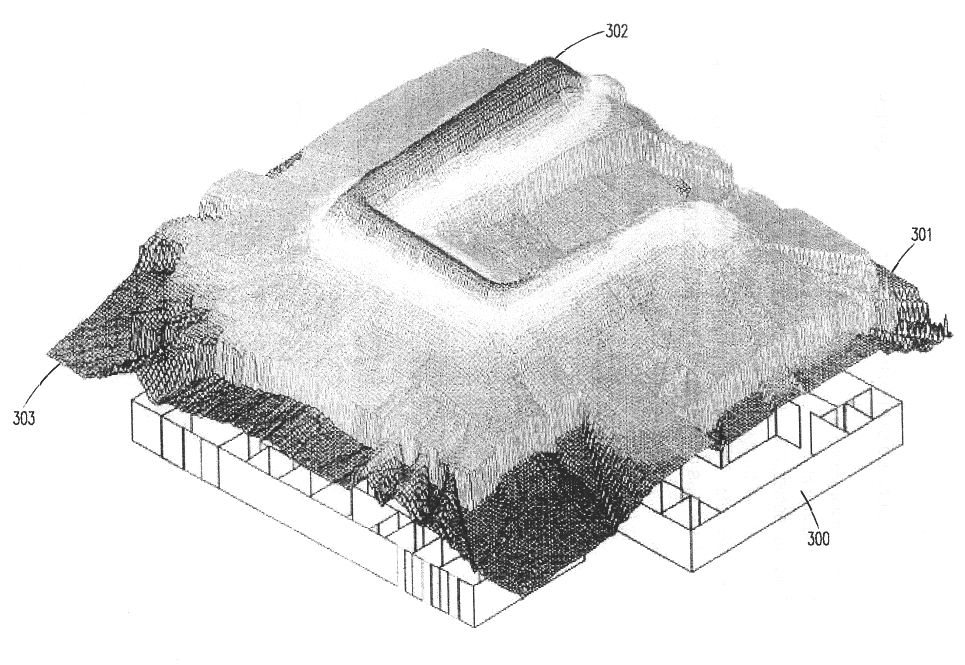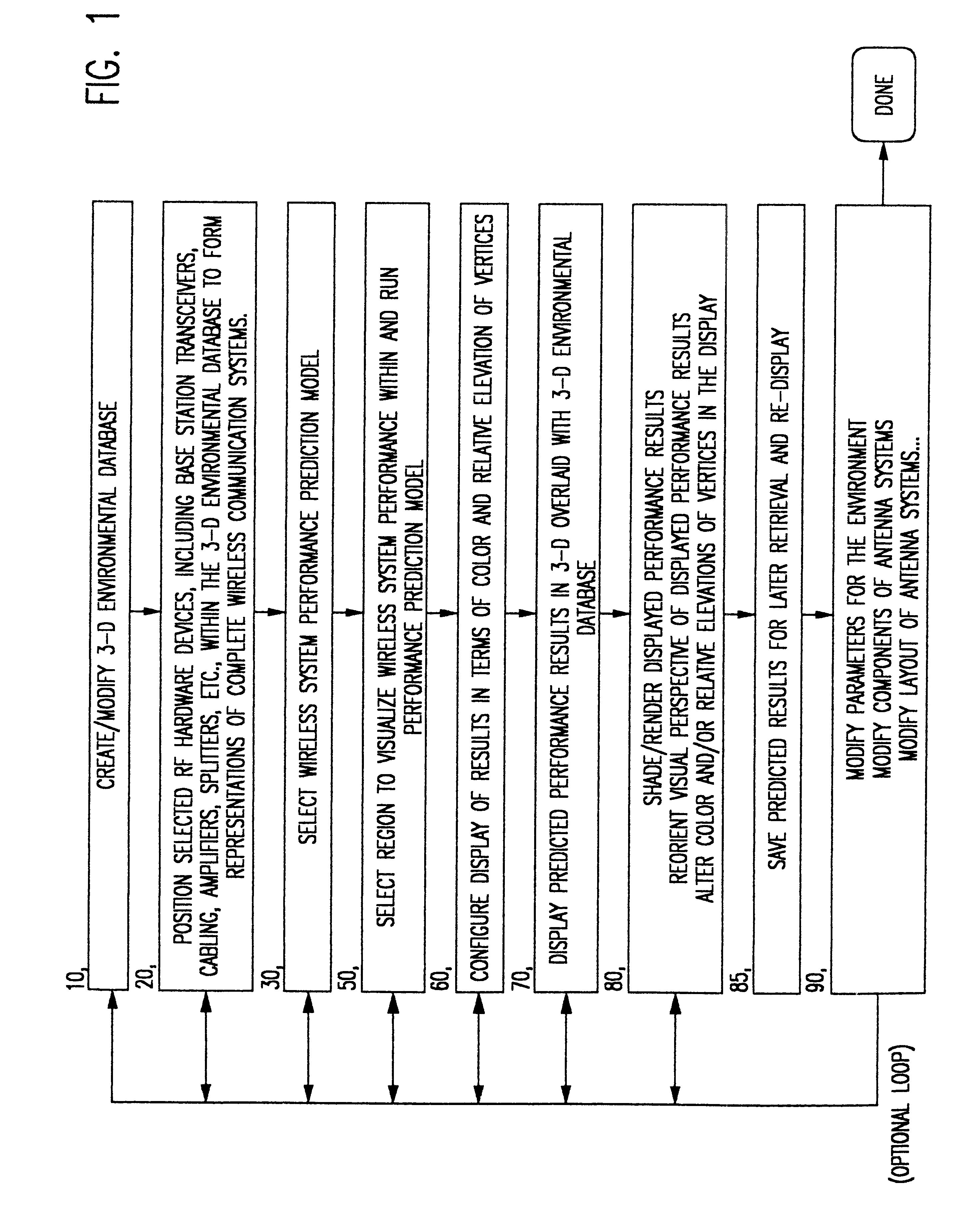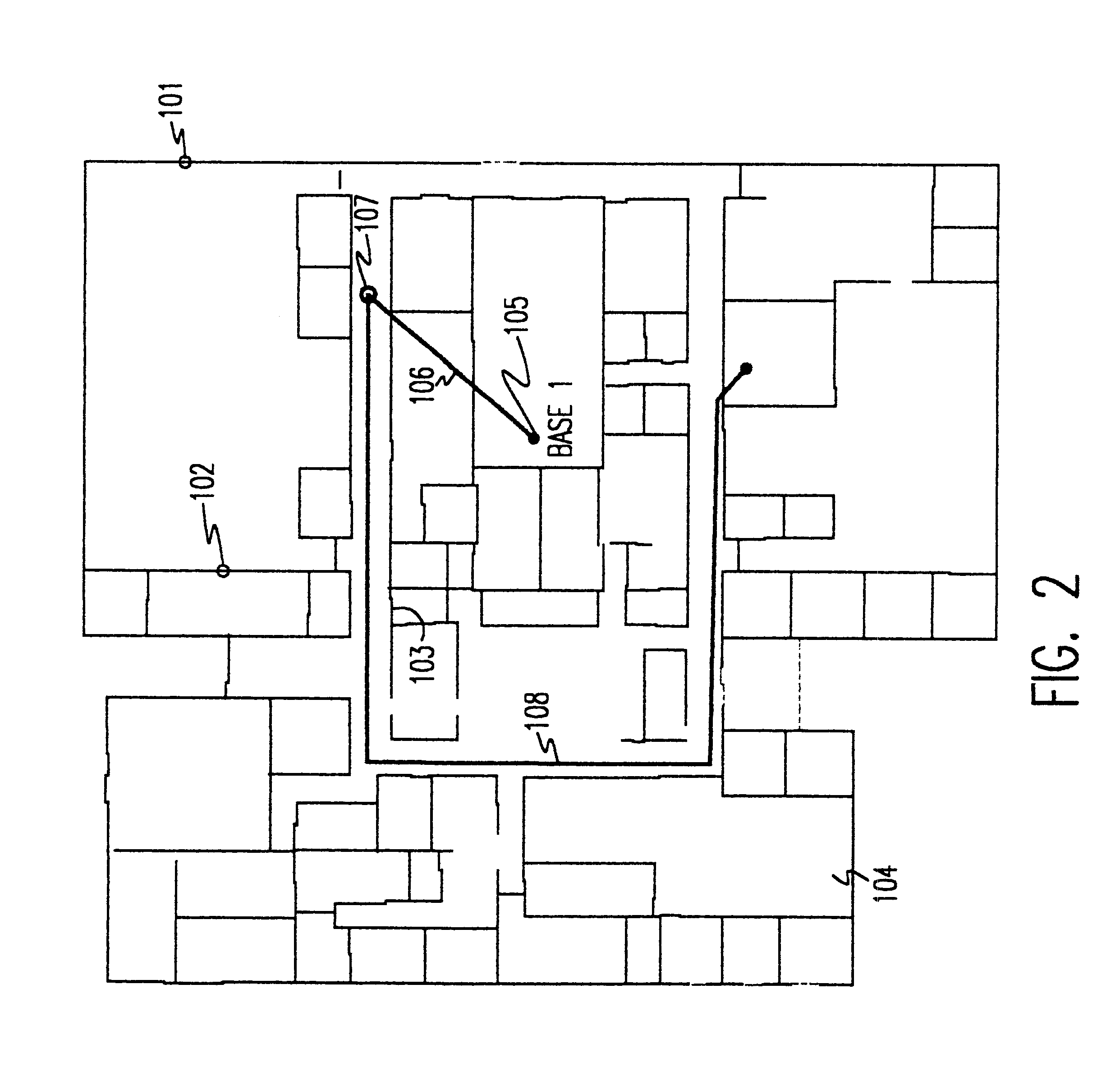System for the three-dimensional display of wireless communication system performance
a wireless communication system and performance technology, applied in the direction of receiver monitoring, transmission monitoring, instruments, etc., can solve the problems of reducing the cost of in-building and microcellular wireless communication devices, sharp increase in the workload of wireless system design engineers and technicians to deploy such systems, and maximizing the performance of a wireless system
- Summary
- Abstract
- Description
- Claims
- Application Information
AI Technical Summary
Benefits of technology
Problems solved by technology
Method used
Image
Examples
Embodiment Construction
Using the present method, it is now possible to assess the performance of a wireless communication system to a much higher level of precision than previously possible. The present method is a significant advance over the prior art in the display of predicted performance of wireless communication systems. The design of wireless communication systems is often a very complex and arduous task, with a considerable amount of effort required to simply analyze the results of predicted performance. In the prior art, the only options available for displaying predicted coverage areas involve the two-dimensional display of boundary contours or colored grids overlaid with a two-dimensional representation of the environment. This is prohibitive to a design engineer in terms of the amount of information conveyed.
Referring to FIG. 1, there is shown a flow diagram according to the present invention. Before one can run an automated performance predictive model on a desired environment, a 3-D electron...
PUM
 Login to View More
Login to View More Abstract
Description
Claims
Application Information
 Login to View More
Login to View More - R&D
- Intellectual Property
- Life Sciences
- Materials
- Tech Scout
- Unparalleled Data Quality
- Higher Quality Content
- 60% Fewer Hallucinations
Browse by: Latest US Patents, China's latest patents, Technical Efficacy Thesaurus, Application Domain, Technology Topic, Popular Technical Reports.
© 2025 PatSnap. All rights reserved.Legal|Privacy policy|Modern Slavery Act Transparency Statement|Sitemap|About US| Contact US: help@patsnap.com



